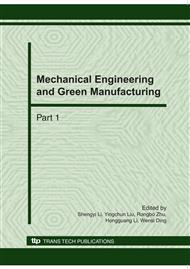p.376
p.383
p.387
p.393
p.399
p.404
p.410
p.417
p.422
Crashworthiness Optimization Using Response Surface Method Based on Uniform Design
Abstract:
The crash box of vehicle plays an important role in absorbing energy during collision. However, the crashworthiness optimization problem is nonlinear which means the relationship between the response and design variables is implicit. This paper constructed a response surface model instead of original model. Meanwhile, uniform design has been taken to select sampling points uniformly. Then PSO method was used to optimize the approximate model with high precision. Finally, the optimization results show that the crashworthiness of structure has enhanced and provide a guide for practical application of crashworthiness design.
Info:
Periodical:
Pages:
399-403
Citation:
Online since:
October 2010
Authors:
Price:
Сopyright:
© 2010 Trans Tech Publications Ltd. All Rights Reserved
Share:
Citation:


